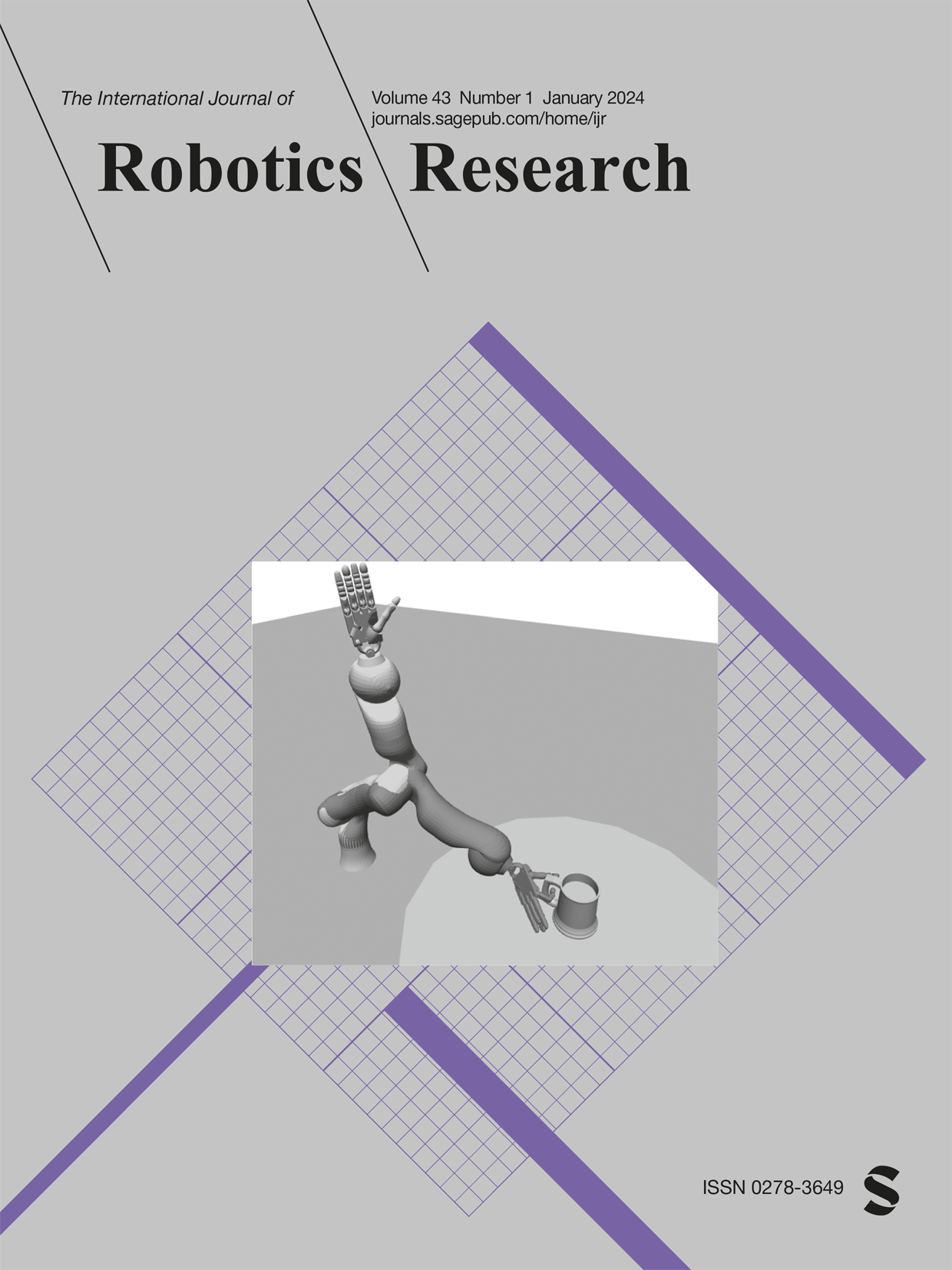Physical interaction as communication: Learning robot objectives online from human corrections
IF 7.5
1区 计算机科学
Q1 ROBOTICS
引用次数: 14
Abstract
When a robot performs a task next to a human, physical interaction is inevitable: the human might push, pull, twist, or guide the robot. The state of the art treats these interactions as disturbances that the robot should reject or avoid. At best, these robots respond safely while the human interacts; but after the human lets go, these robots simply return to their original behavior. We recognize that physical human–robot interaction (pHRI) is often intentional: the human intervenes on purpose because the robot is not doing the task correctly. In this article, we argue that when pHRI is intentional it is also informative: the robot can leverage interactions to learn how it should complete the rest of its current task even after the person lets go. We formalize pHRI as a dynamical system, where the human has in mind an objective function they want the robot to optimize, but the robot does not get direct access to the parameters of this objective: they are internal to the human. Within our proposed framework human interactions become observations about the true objective. We introduce approximations to learn from and respond to pHRI in real-time. We recognize that not all human corrections are perfect: often users interact with the robot noisily, and so we improve the efficiency of robot learning from pHRI by reducing unintended learning. Finally, we conduct simulations and user studies on a robotic manipulator to compare our proposed approach with the state of the art. Our results indicate that learning from pHRI leads to better task performance and improved human satisfaction.作为交流的物理交互:从人类纠正中在线学习机器人目标
当机器人在人类旁边执行任务时,物理交互是不可避免的:人类可能会推、拉、扭或引导机器人。目前的技术将这些相互作用视为干扰,机器人应该拒绝或避免。在最好的情况下,这些机器人在人类互动时能安全地做出反应;但在人类放手之后,这些机器人就会恢复原来的行为。我们认识到物理人机交互(pHRI)通常是有意的:人类故意干预,因为机器人没有正确地完成任务。在本文中,我们认为,当pHRI是有意的,它也可以提供信息:机器人可以利用交互来学习如何完成当前任务的其余部分,即使在人离开之后。我们将pHRI形式化为一个动态系统,其中人类在脑海中有一个目标函数,他们希望机器人优化,但机器人不能直接访问这个目标的参数:它们是人类内部的。在我们提出的框架内,人类的互动变成了对真实目标的观察。我们引入近似值来实时学习和响应pHRI。我们认识到并非所有的人类纠正都是完美的:用户经常与机器人进行嘈杂的交互,因此我们通过减少意外学习来提高机器人从pHRI学习的效率。最后,我们对机器人机械手进行了仿真和用户研究,以比较我们提出的方法与最先进的方法。我们的研究结果表明,从pHRI中学习可以提高任务绩效和人类满意度。
本文章由计算机程序翻译,如有差异,请以英文原文为准。
求助全文
约1分钟内获得全文
求助全文
来源期刊
CiteScore
22.20
自引率
0.00%
发文量
34
审稿时长
6-12 weeks
期刊介绍:
The International Journal of Robotics Research (IJRR) has been a leading peer-reviewed publication in the field for over two decades. It holds the distinction of being the first scholarly journal dedicated to robotics research.
IJRR presents cutting-edge and thought-provoking original research papers, articles, and reviews that delve into groundbreaking trends, technical advancements, and theoretical developments in robotics. Renowned scholars and practitioners contribute to its content, offering their expertise and insights. This journal covers a wide range of topics, going beyond narrow technical advancements to encompass various aspects of robotics.
The primary aim of IJRR is to publish work that has lasting value for the scientific and technological advancement of the field. Only original, robust, and practical research that can serve as a foundation for further progress is considered for publication. The focus is on producing content that will remain valuable and relevant over time.
In summary, IJRR stands as a prestigious publication that drives innovation and knowledge in robotics research.

 求助内容:
求助内容: 应助结果提醒方式:
应助结果提醒方式:


